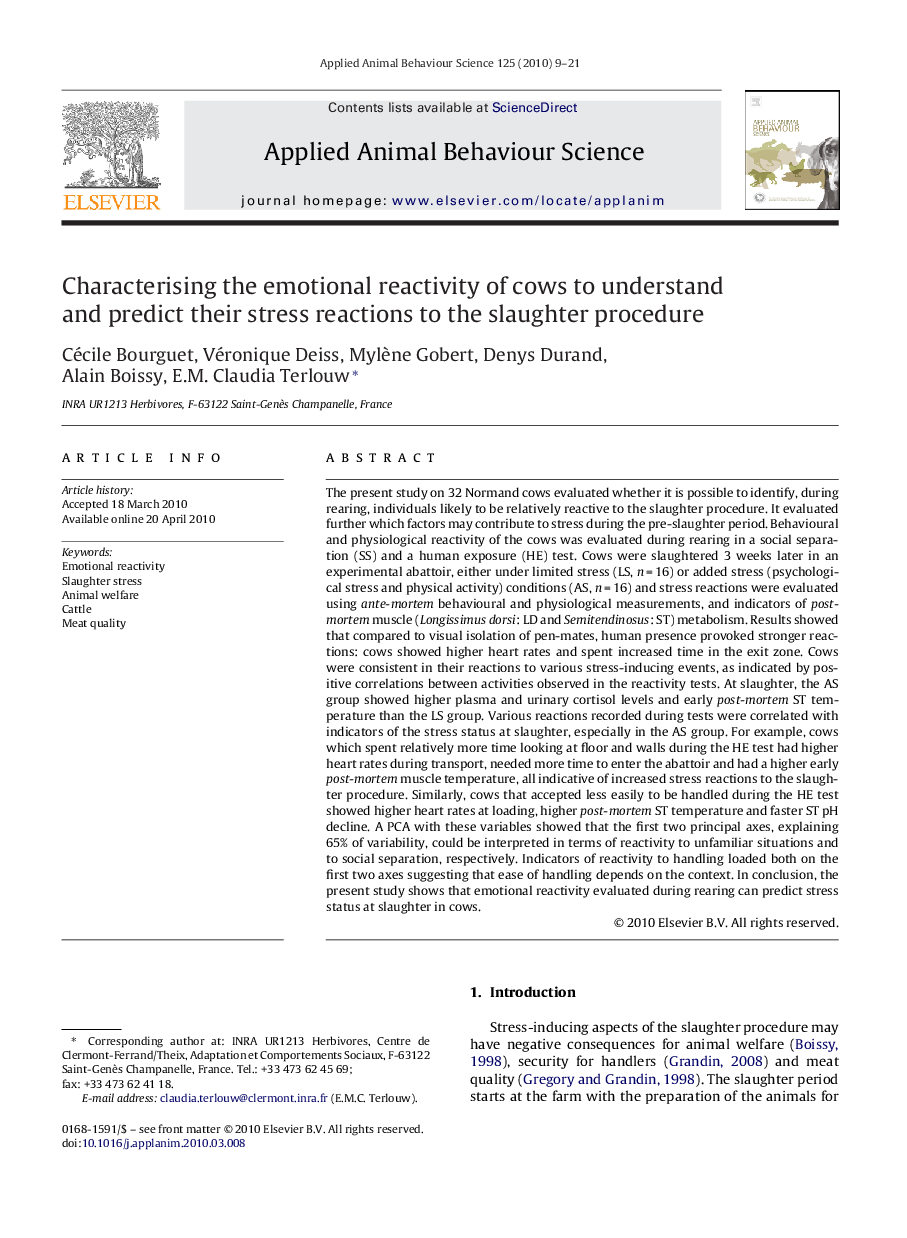| Article ID | Journal | Published Year | Pages | File Type |
|---|---|---|---|---|
| 4523323 | Applied Animal Behaviour Science | 2010 | 13 Pages |
The present study on 32 Normand cows evaluated whether it is possible to identify, during rearing, individuals likely to be relatively reactive to the slaughter procedure. It evaluated further which factors may contribute to stress during the pre-slaughter period. Behavioural and physiological reactivity of the cows was evaluated during rearing in a social separation (SS) and a human exposure (HE) test. Cows were slaughtered 3 weeks later in an experimental abattoir, either under limited stress (LS, n = 16) or added stress (psychological stress and physical activity) conditions (AS, n = 16) and stress reactions were evaluated using ante-mortem behavioural and physiological measurements, and indicators of post-mortem muscle (Longissimus dorsi: LD and Semitendinosus: ST) metabolism. Results showed that compared to visual isolation of pen-mates, human presence provoked stronger reactions: cows showed higher heart rates and spent increased time in the exit zone. Cows were consistent in their reactions to various stress-inducing events, as indicated by positive correlations between activities observed in the reactivity tests. At slaughter, the AS group showed higher plasma and urinary cortisol levels and early post-mortem ST temperature than the LS group. Various reactions recorded during tests were correlated with indicators of the stress status at slaughter, especially in the AS group. For example, cows which spent relatively more time looking at floor and walls during the HE test had higher heart rates during transport, needed more time to enter the abattoir and had a higher early post-mortem muscle temperature, all indicative of increased stress reactions to the slaughter procedure. Similarly, cows that accepted less easily to be handled during the HE test showed higher heart rates at loading, higher post-mortem ST temperature and faster ST pH decline. A PCA with these variables showed that the first two principal axes, explaining 65% of variability, could be interpreted in terms of reactivity to unfamiliar situations and to social separation, respectively. Indicators of reactivity to handling loaded both on the first two axes suggesting that ease of handling depends on the context. In conclusion, the present study shows that emotional reactivity evaluated during rearing can predict stress status at slaughter in cows.
